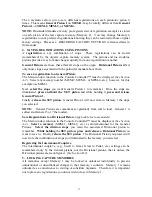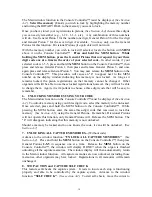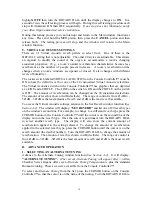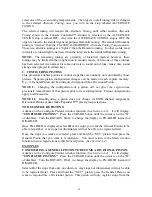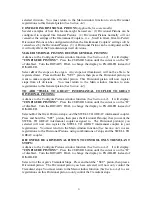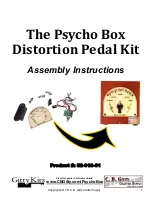
6
Solo
A solo combination is one in which a melody is played on one keyboard, the
accompaniment on another keyboard, and the pedal often provides a light bass line.
Almost any stop or combination of stops will sound good as a solo voice. A contrasting
tone quality should be chosen for the accompaniment, so that the accompaniment is softer
than the solo voice. The Pedal stops must provide a foundation for the sound without
covering it. Caution is advised when the solo part involves chords, since some stops do
not blend well in close harmony. Avoid fractionally pitched (mutated) stops and pungent
sounding reeds unless they produce the effect you are seeking.
Most 8’ reed stops make interesting solo voices. The addition of a 4’ Tibia or a Tibia
mutation (e.g., Twelfth or Tierce) to a light reed such as the Clarinet or Orchestral Oboe
colors the sound further and increases its volume slightly. Adding an 8’ Tibia to a reed
will add body to the sound.
In creating registrations of your own, remember these three simple rules: (1) Seek tonal
contrast between solo and accompaniment; (2) Be sure the solo is louder than the
accompaniment; (3) Choose a solo whose character is appropriate to the specific piece.
ENSEMBLE
Ensemble registrations involve groups of stops that are played together, usually, but not
always, with both hands on one keyboard. They are characterized by compatibility of
tone, clarity, and occasionally power. Volumes have been written on the subject of
ensemble registration. Following is a summary of the major points.
Ensembles are created by combining stops. Two factors are always to be considered:
tone quality and pitch. Ensembles begin with a few stops at the 16’, 8’, and/or 4’ pitch
and expand “outward” in pitch as they build up.
Ensembles are generally divided into three tonal groupings or “choruses”:
The
Tibia Clausa
chorus is the most fully developed with representation in
various divisions of the organ and at every pitch from 16’ (Tibia) through 1 3/5’
(Tierce). Lighter stops can be added to the basic 8’ and 4’ Tibia combinations
and then the Diapasons, Strings and Trumpets can be added to fill out an
ensemble registration.
The
Reed
stops include those reed tones designed to be used in the ensemble
buildup. Not all reed voices are ensemble tones. An Oboe, for example, is
usually a solo stop. The various Trumpets, Horns, and Vox Humanas are
usually ensemble voices that add brilliance, power, and incisiveness to the
sound. If you have questions as to whether a specific reed is a solo or ensemble
stop, refer to the stop glossary in the preceding section.
The
Pedal
ensemble is created in much the same way as the manual ensembles,
with the Pedal starting at 16’ pitch instead of 8’. Be careful that the volume of
the pedals is not greater than that of the manuals. Although the manual to pedal
couplers are useful in bringing clarity to the pedal line, especially on softer
registrations, avoid the temptation to rely constantly on one or two 16’ stops and
a coupler. Many times in more rhythmic pieces you will want to have a
predominantly 8’ sound in the pedal.

















